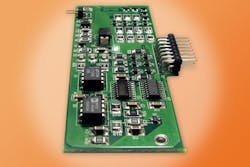Standards and certifications guide technology developments
Standards are critical to every kind of engineering—and certifications play a similarly vital role. A number of recent announcements highlight the role of both in the rapidly evolving automotive, aerospace, and medical-electronics engineering fields.
For instance, Mentor Graphics (a Siemens business) recently announced ISO 26262 Qualification for its Oasys-RTL, Nitro-SoC and FormalPro Logic Equivalency Checker products as part of the expansion of its Mentor Safe functional safety assurance program. ISO 26262, titled Road Vehicles–Functional Safety, is a development of International Electrotechnical Commission (IEC) 61508 and was first published in 2011, with the goal of reducing possible hazards caused by the malfunctioning of vehicle electronic and electrical systems. It is a topic that is taking on ever greater importance as more vehicle functions are managed by electronics and, in particular, as autonomous vehicles move out of the lab and onto the road.
The standard relates to the functional safety of electrical and electronic systems, not to that of systems as a whole or of their mechanical subsystems. Like its parent standard, IEC 61508, ISO 26262 is a risk-based safety standard, where the risk of hazardous operational situations is qualitatively assessed and safety measures are defined to avoid or control failures or mitigate their effects.
“Achieving ISO 26262 qualification for our RTL-to-GDS implementation solutions is imperative for our automotive customers to seamlessly design their products,” said Shankar Krishnamoorthy, general manager of Mentor’s IC Design Solutions Division, in a prepared statement. “The ISO 26262 qualification of documentation for these products enables our customers to streamline critical IC design tasks while meeting the automotive industry’s stringent functional-safety requirements,” he added.
Navigating a daunting process
Earning certification has always represented a challenge for engineering-based organizations. Even very successful companies with excellent quality programs have found the specific process to be daunting. Nowadays, an additional factor can be the need to extend internationally. In some cases, this can come in helpful forms. For instance, American Polarizers recently earned ISO 9001:2015 certification, with help from DEKRA Certification Inc. (DCI), part of DEKRA Certification Group headquartered in Stuttgart, Germany, and focusing on ISO 9001 (quality), ISO 14001 (environment), AS 9100C (aviation, space, and defense), and IATF 16949 (automotive).
In other cases, though, the challenge is to convince an overseas organization that your products, processes, and methods are up to the task. C&K, a maker of high-reliability connectors and electromechanical switches, headquartered in Newton, MA, recently achieved the AS 9100 certification from the Association Française de Normalisation (AFNOR) for its global manufacturing operations. Its sites in Dole and Serris, France, had been compliant since 2008, but North American operations had yet to meet the requirements. Now, with the entire C&K manufacturing chain certified, the company boasts that it can receive orders directly from aerospace customers, regardless of location.
Crossing the certification barrier
AS 9100 has been around for nearly two decades, and was updated in 2016 (revision D) by the Society of Automotive Engineers (SAE) and the European Association of Aerospace Industries, with the addition of 130 “high reliability” requirements on the management system. The standard incorporates ISO 9000, and is a prerequisite for doing business with major aerospace manufacturers and suppliers globally.
For Digicom Electronics Inc.—an electronics manufacturing services (EMS) company based in Oakland, CA, that wanted to expand beyond its strengths in serving the medical market (Figure 1)—working to achieve AS 9100 RevD made business sense. The effort was successful, but it wasn’t easy.
Photo courtesy of Digicom
“This certification doesn’t just indicate that Digicom has a quality-management system. It involves so much more,” explained Douglas Sutherland, president and CEO of NeXsys Group Inc., the professional services company that assisted Digicom in achieving AS 9100 and ISO certifications.1
He explained that management must be able to describe and document their strategic direction and how that might be affected by “interested parties” ranging from government regulators to banks or shareholders. “That means senior management is deeply involved in the audit and they must demonstrate how they will manage those factors,” he said. “When we are brought in by a client like Digicom, they interview us—and we also interview them to make sure there is a real commitment,” said Sutherland. Digicom has previously achieved ISO 13485:2003 certification for medical device quality, noted Mo Ohady, company general manager.
Reference
- “Digicom receives AS9100:2016 and ISO 9001:2015 certifications,” EE-Evaluation Engineering Online, July 19, 2017.
About the Author


